In our continuing tracking of infectious diseases, TAG is seeing a number of areas of which businesses need to be aware, with particular focus on those which are most prevalent in the states in which you operate (as seen in TAG matrices below). Additionally, for Hepatitis A, Influenza, COVID, and Measles, a key preventive tactic is vaccination.
Hepatitis A. The outbreak is ongoing, continuing to impact the states in which it has been seen in recent weeks. In fact, according to CDC, the US has been experiencing an ongoing Hep A outbreak since about 2017 with the primary transmission route being person to person and not from foods. Because of this and the recent upsurge, it is important that businesses with operations in states where it is endemic be aware of the transmission and ensure wellness checks are being conducted and encourage vaccinations.
Influenza. With many U.S. states already in CDC’s “very high” levels of cases – levels typically not seen until late December, TAG is predicting that we will see a huge flu season this year. Encouraging, or even providing, employee vaccinations continue to be an essential aspect of prevention.
COVID. The U.S. is starting to see an upward trend in COVID cases, transmissions, and hospitalizations, even in states that were seeing downward trends. While the nation is doing fairly well as compared with global rates, encouraging vaccination is, once again, key. The bivalent boosters currently being given have been shown to be highly effective against the current variants, as reported by CDC.
Measles. According to both the World Health Organization (WHO) and the US Centers for Disease Control and Prevention (CDC), measles is currently spreading in various regions of the world as the COVID pandemic has led to a steady decline in measles vaccination rates and weakened surveillance of the disease. As stated in the joint WHO/CDC report, a record high of nearly 40 million children missed a measles vaccine dose in 2021 due to the pandemic. With measles being one of the most contagious human viruses, but is almost entirely preventable through vaccination, the organizations are highly encouraging public health officials to accelerate vaccination efforts and strengthen surveillance, to help ensure that all unprotected children be immunized.
Monkeypox (mpox). As seen in today’s key points, the WHO has selected mpox as the replacement reference for monkeypox to reduce the associated stigma. With the decline of the disease to near zero in the U.S. and the CDC’s diminished frequency of reporting, TAG will continue tracking its cases internally but will discontinue our reporting – unless there should be a significant turn in cases.
COVID Risk Matrix:
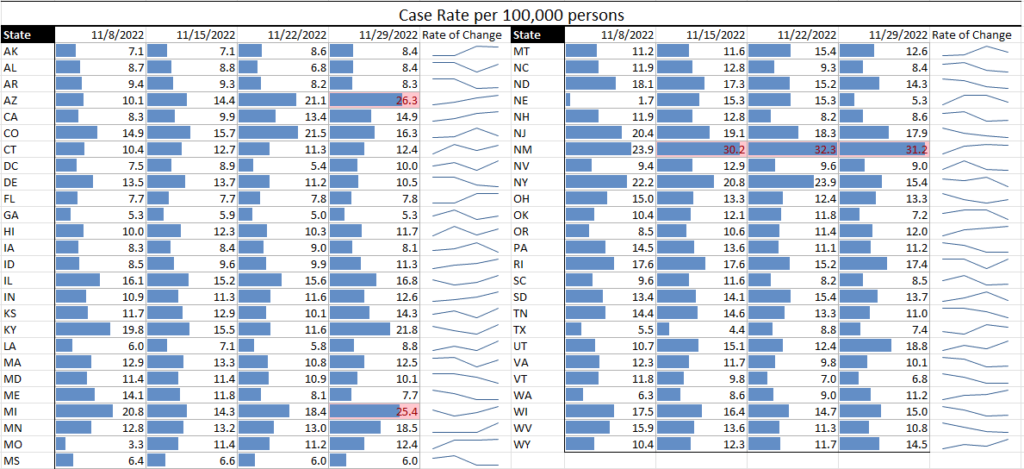
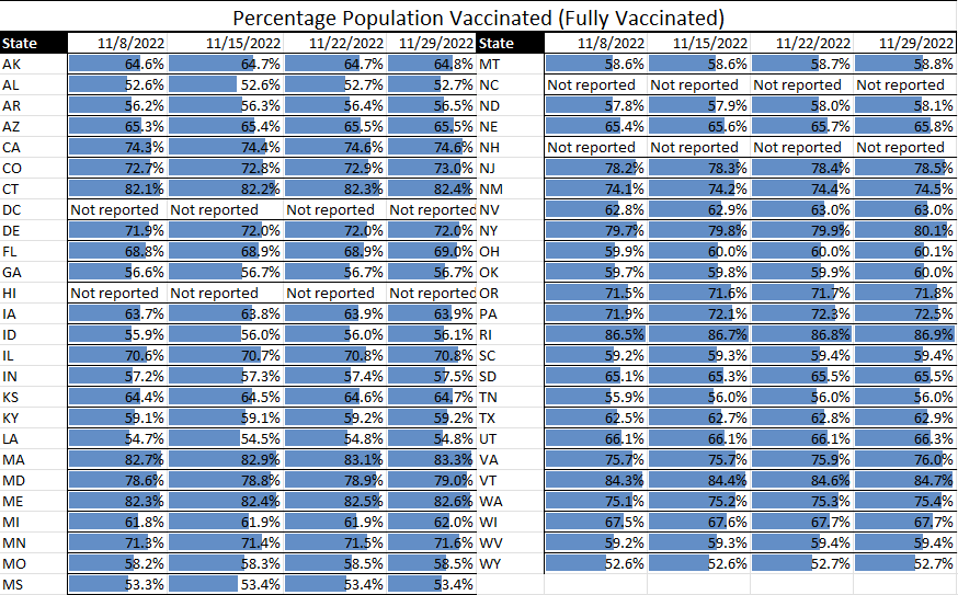
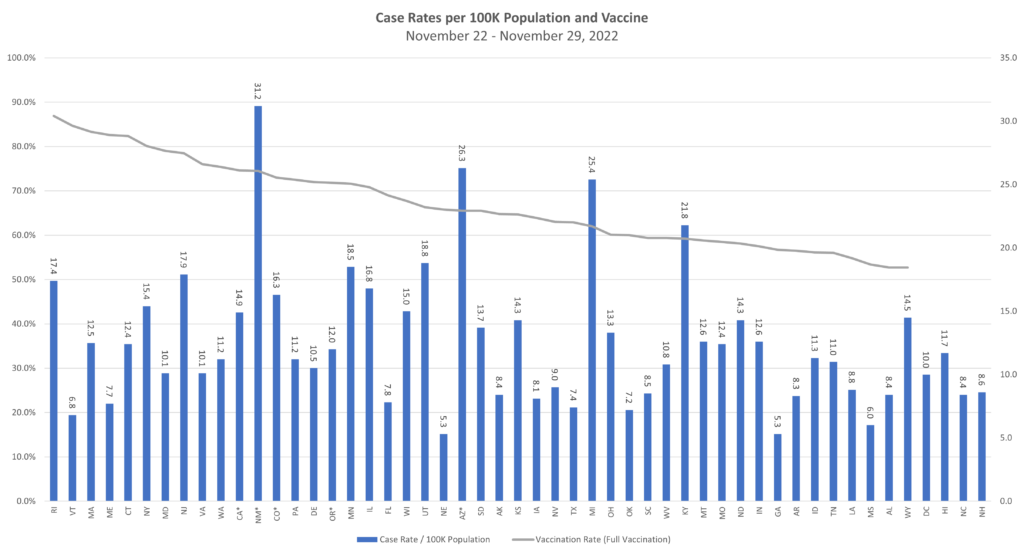
Monkeypox:
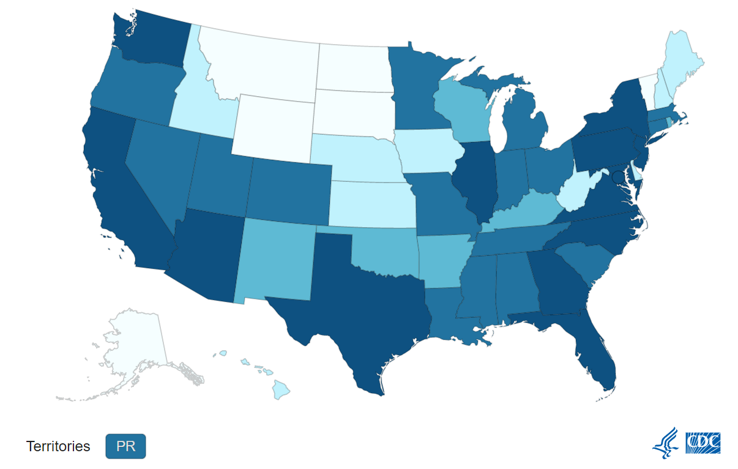


Influenza:
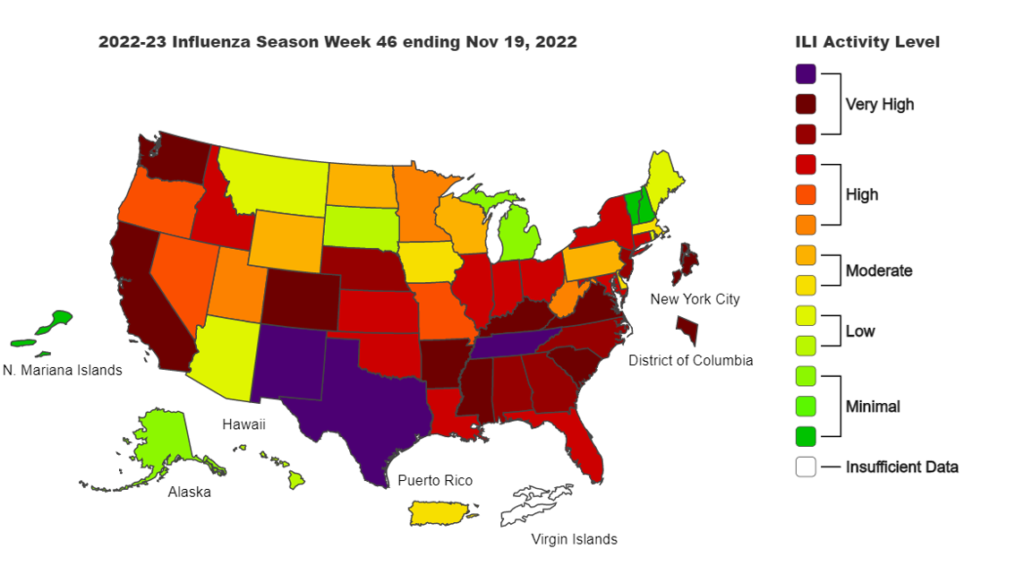
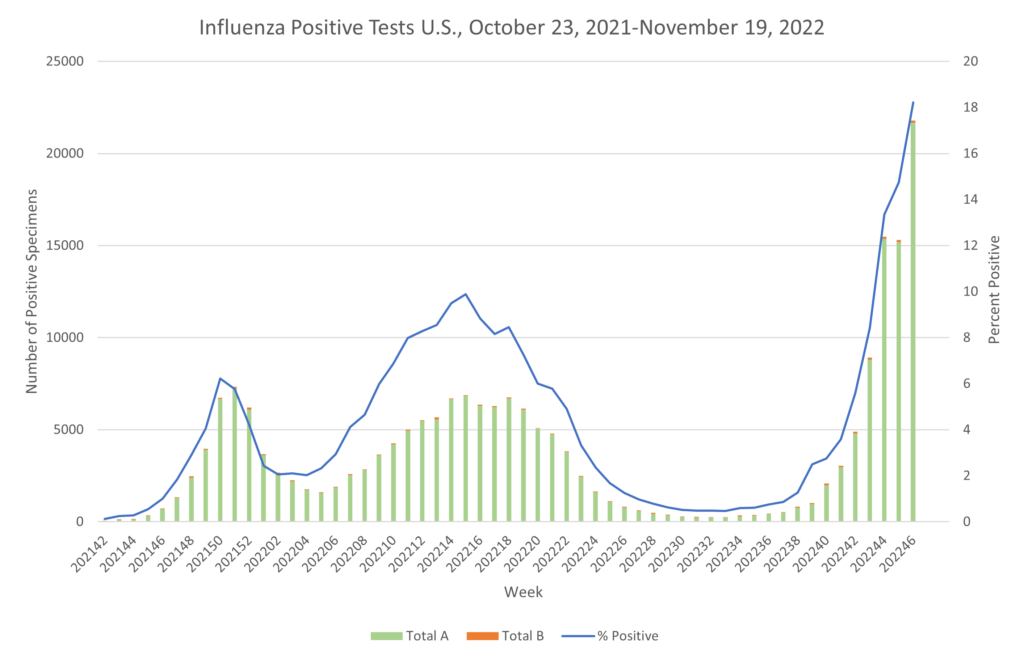
Infectious Disease News
- Ebola. The Uganda government will close schools nationwide later this month after 23 Ebola cases were confirmed among students including eight children who died. Uganda has confirmed 141 Ebola cases and 55 deaths so far, according to its health ministry. An Ebola outbreak is officially declared over after 42 days with no cases (i.e., twice the maximum incubation period).
- Influenza: Flu cases are rising everywhere. The CDC has reported the United States’ flu markers for the week ending November 19 climbed higher with most of the continental US reporting high or very high activity and reports of five more deaths in children. A bad year for flu and RSV is expected this year as COVID protocols relax and immune systems haven’t been exposed to the circulating strains, but a recent article in The Atlantic suggested that upcoming years may not be as bad. Progress is being made on antibody therapy and a vaccine against RSV. However, it’s not known what variants of SARS-CoV-2 may emerge, so COVID illnesses could wane or come back with a vengeance. What’s key is that there are lessons to be learned from the pandemic strategies and it’s important to apply them. A recent letter published in The Pediatric Infectious Disease Journal reported that the causative agent of “tomato flu” was identified as an enterovirus (CA16) in two children, who had recently returned to the UK from Kerala, which is considered the most common cause of hand, foot and mouth disease.
- Measles. The World Health Organization said that measles is currently spreading in various regions of the world as the COVID pandemic has led to a steady decline in measles vaccination rates and weakened surveillance of the disease. In India, measles cases are now being reported from a dozen areas of the city. The highly infectious viral disease, that mostly strikes infants and young kids, has already claimed 11 lives in Mumbai while over 1,000 children are reported to be sick. Measles vaccine rates have fallen.
- Monkeypox. “WHO will begin using a new preferred term ‘mpox’ as a synonym for monkeypox. Both names will be used simultaneously for one year while ‘monkeypox’ is phased out.”
- COVID. US COVID: The 7-day average for new daily COVID-19 cases is 43,692, up 8% compared to a week ago, according to the Washington Post tracker. Similarly, the daily average for deaths is 379, up 24% from last week. And likewise, hospitalizations are up 5%. About 35 million individuals have received their booster, 16 million were seniors. Last week the Biden administration announced a 6-week sprint designed to expand use of the updated COVID booster shot by the end of the year. In a fact sheet, the White House detailed other elements of the 6-week booster campaign, which includes $350 million for community health centers to expand vaccination outreach, $125 million to get more older Americans vaccinated, and new enforcement guidance to ensure that nursing homes are offering the updated booster, along with timely treatment for residents and staff. Additional pop-up vaccination clinics will be opening to make getting vaccinated easier by the end of the year.





